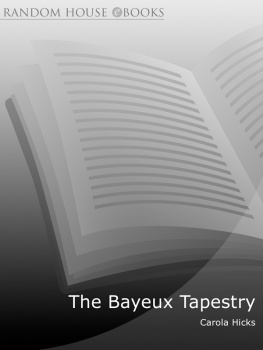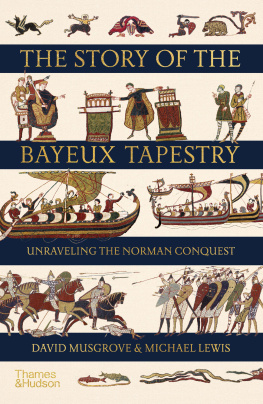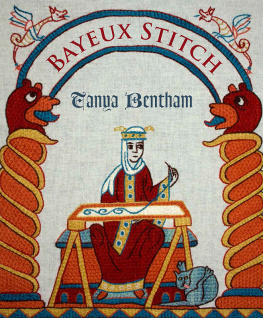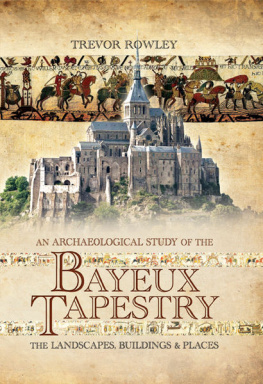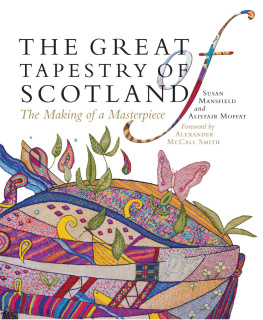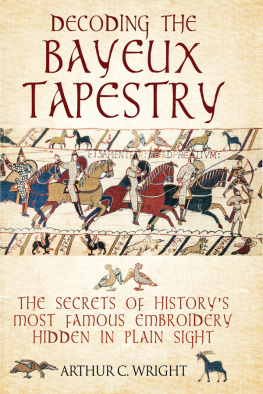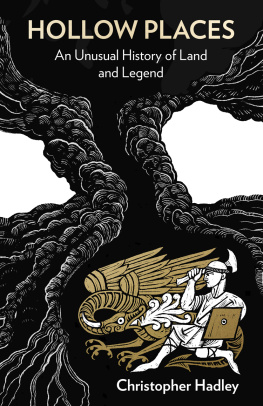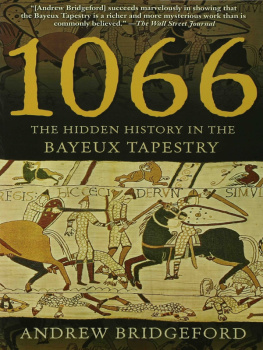
CAROLA HICKS
The Bayeux
Tapestry
The Life Story of
a Masterpiece
This eBook is copyright material and must not be copied, reproduced, transferred, distributed, leased, licensed or publicly performed or used in any way except as specifically permitted in writing by the publishers, as allowed under the terms and conditions under which it was purchased or as strictly permitted by applicable copyright law. Any unauthorised distribution or use of this text may be a direct infringement of the authors and publishers rights and those responsible may be liable in law accordingly.
Version 1.0
Epub ISBN 9781407065885
www.randomhouse.co.uk
Published by Vintage 2007
6 8 10 9 7 5
Copyright Carola Hicks 2006
Carola Hicks has asserted her right under the Copyright, Designs and Patents Act, 1988 to be identified as the author of this work
This book is sold subject to the condition that it shall not by way of trade or otherwise, be lent, resold, hired out, or otherwise circulated without the publishers prior consent in any form of binding or cover other than that in which it is published and without a similar condition including this condition being imposed on the subsequent purchaser
First published in Great Britain in 2006 by
Chatto & Windus
Vintage
Random House, 20 Vauxhall Bridge Road,
London SW1V 2SA
www.vintage-books.co.uk
Addresses for companies within The Random House Group Limited can be found at: www.randomhouse.co.uk/offices.htm
The Random House Group Limited Reg. No. 954009
A CIP catalogue record for this book is available from the British Library
ISBN 9780099450191
Contents
About the Author
Carola Hicks teaches Art History at Cambridge University. Her books include Animals in Medieval Art, Discovering Stained Glass and Improper Pursuits, a highly acclaimed biography of the eighteenth-century artist and designer Lady Di Beauclerk.
About the Book
The vivid scenes on the Bayeux Tapestry depict the events leading up to the Battle of Hastings in 1066. It is one of Europes greatest treasures and its own story is full of drama and surprise.
Who commissioned the tapestry? Was it Bishop Odo, Williams ruthless half-brother? Or Harolds dynamic sister Edith, juggling for a place in the new court? Hicks shows us this world and the miracle of the tapestrys making the stitches, dyes and strange details in the margins. For centuries it lay ignored in Bayeux cathedral until its discovery in the eighteenth century. It became a symbol of power as well as art: townsfolk saved it during the French Revolution; Napoleon displayed it to promote his own conquest; the Nazis strove to make it their own; and its influence endures today.
This marvellous book, packed with thrilling stories, shows how we remake history in every age and how a great work of art has a life of its own.
Also by Carola Hicks
Animals in Early Medieval Art
Discovering Stained Glass
Improper Pursuits: The Scandalous Life of
Lady Di Beauclerk
The Kings Glass
List of Illustrations
Colour Plates
Scenes from the Bayeux Tapestry:
Illustrations in the text
I Embroidering History
Part title: Edwards deathbed
From the Tapestry.
II Lost and Found
Part-title: Border motif, fox and bird
III Revolutionaries and Romantics
Part title: The Brittany campaign
IV The Gentle Touch
Part-title: Border motif, cock and hen
V The Great Escape
Part-title: Soldier on the rope
VI Global Image
Part-title: Setting the weather-vane
Picture credits
The page references in this section correspond to the printed edition from which this ebook was created.
Scenes from the Bayeux Tapestry: By special permission of the City of Bayeux. Colour Plates: 7 Victoria and Albert Museum, London/Bridgeman Art Library; 8 Muse de la Ville de Paris, Muse Carnavalet, Paris/ Bridgeman; 9 Chteau de Versailles/Bridgeman; 10 Bibliothque des Arts Decoratifs, Paris/Bridgeman; 11 The Society of Antiquaries of London; 12 The Bayeux Tapestry, John Collingwood Bruce, 1856; 13 Baron Gerard Museum, Bayeux; 14 The Anchorage, Handsworth, Birmingham/photo Anthony Wallbank/ fotolibra; 15 Reading Museum Service (Reading Borough Council); 16 The D-Day Museum, Portsmouth The Overlord Embroidery Trust; 17 Battle Parish Church, Sussex/photo by Mick Sargent/fotolibra; Michael Linton Illustrations in the text: 33 The British Library; 49 City of Bayeux/Caisse Nationale des Monuments Historiques et des Sites, Paris; 52, 167 M. Rud, The Bayeux Tapestry, Copenhagen, 1992; 71, 107 Bibliothque Nationale de France, Paris; 77, 78, 127, 225 Cambridge University Library; 81 Ashmolean Museum, Oxford/Bridgeman; 98 Chteau de Versailles/ Bridgeman; 119 C. Dawson, Restorations of the Bayeux Tapestry, 1907; 124 Trustees of the British Museum; 135 The Society of Antiquaries of London; 136 The Bayeux Tapestry, John Collingwood Bruce, 1856; 186, 188 Reading Museum Service (Reading Borough Council); 207, 210 R. Dubosq, La Tapisserie de Bayeux dix ans tragiques, 1951/V&A Picture Library; 230 Berlin Bundesarchiv; 270 by John Hassall The Art Archive/Imperial War Museum, London; 272 Centre for Cartoons and Caricature, University of Kent (UKCC)/Guardian; 273 UKCC/Daily Telegraph; 274a Clive Goddard; 277 Photograph by John Blau, Camera Press London; 283 T. R. Nevett, Advertising in Britain, Heinemann, 1982; 284 History of Advertising Trust Archive; 300 Author; 301 City of Bayeux.
What They Said
The noblest monument of English antiquity abroad William Stukeley
Very curious and authentic David Hume
Records one of the most memorable deeds of the French nation and preserves the memory of the pride and courage of our ancestors Napoleon Bonaparte
The most interesting thing conceivable John Ruskin
The work of very feeble amateurs Charles Dickens
Very quaint and rude and very interesting William Morris
A story told with irresistible charm Winston Churchill
Important for our glorious and cultured Germanic history Heinrich Himmler
Prologue
Bletchley Park. 18 August 1944. An ugly Victorian mansion and a proliferation of low wooden huts so bleak and institutional that locals assume they house the mad. But this is Station X, a city of 10,000 codebreakers, deciphering the enemys radio signals with the aid of machines, brilliant minds and unremitting concentration. Top priority amongst the messages being intercepted today are those from Berlin to Paris, 11 weeks after D-Day, a time when the Allied forces are moving so rapidly that Hitler is planning to destroy the city rather than let it fall to them intact. Reichsfhrer-SS Heinrich Himmler, Hitlers second-in-command, has wired Carl Oberg, head of the Gestapo and SS in France. This urgent communication is decrypted by Hut 6, then passed on to Hut 3 where it is translated, analysed by a military adviser, evaluated by the duty officer and finally referred to higher authorities. But the message puzzles everyone, for it does not deal with troop movements or arrangements for the impending evacuation. It concerns the Bayeux Tapestry. Do not forget to bring the Bayeux Tapestry, commands Himmler. He has had his eye on it for four years and has already had it moved to the Louvre from a safe place in the country. Before Paris is blown to bits, he wants the Tapestry out.
Next page
